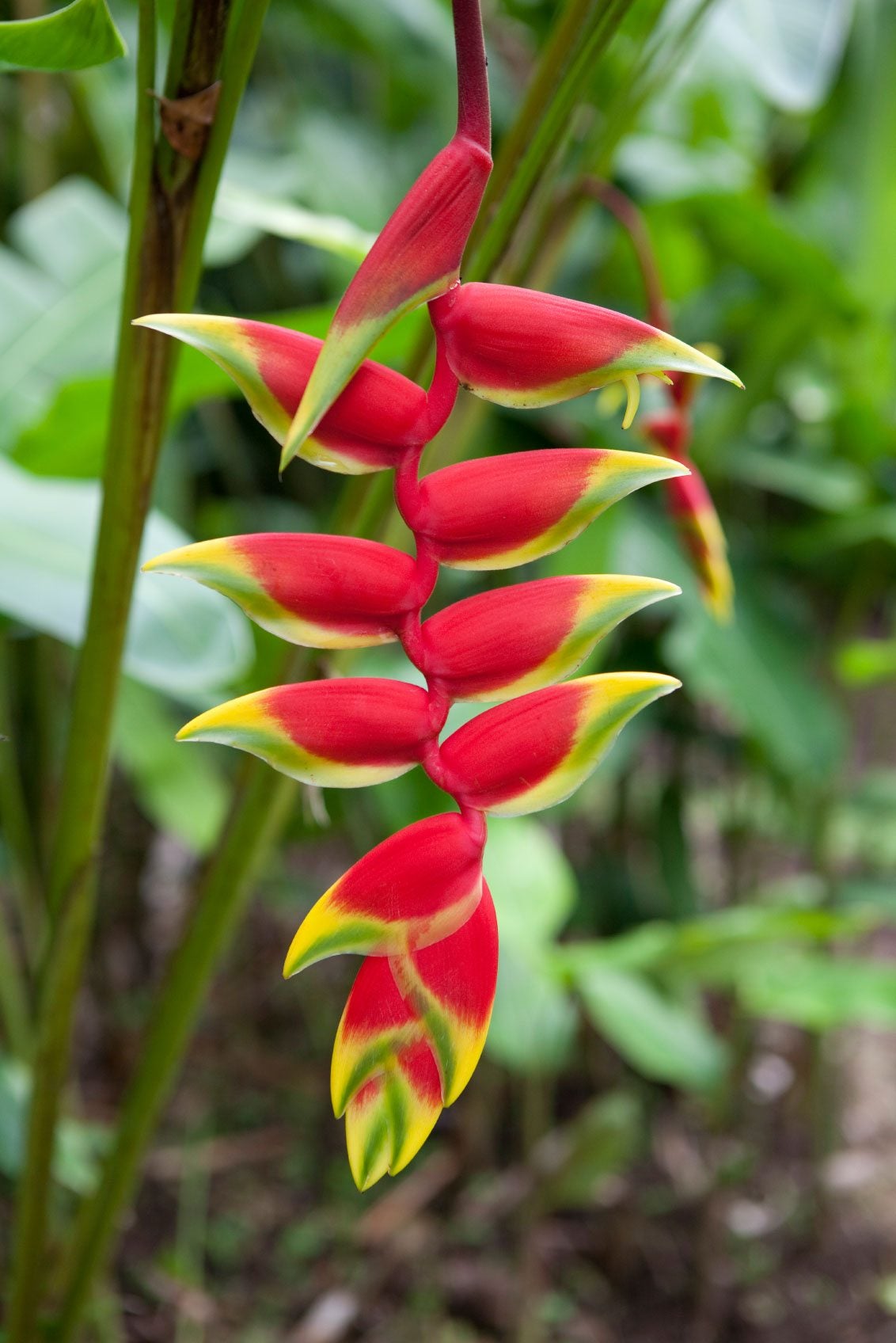Heliconia Lobster Claw Plants: Heliconia Growing Conditions And Care


Tropical flowers never fail to astound and amaze with their forms and colors. Lobster claw plant (Heliconia rostrata) is no exception, with large, brightly hued bracts that cluster up a stem. Heliconia lobster claw is also called parrot flower and has inconsequential tiny flowers covered by the showy bracts. It is native to Central to South America and is hardy in the United States in USDA plant growing zones 10 to 13. What follows is some fun and interesting Heliconia plant info, care and growing facts.
Heliconia Plant Info
Tropical gardeners are lucky to get some of the most fascinating flowering plants to grow. Heliconia is in a group of plants that may grow up to 15 feet (4.5 m.) tall in nature but likely only to 3 to 6 feet (1-2 m.) in a home landscape. They are not at all frost hardy, and therefore not suited for growing outdoors where cold temperatures are common. The thick bracts make excellent cut flowers with a long vase life. Leaves are glossy, green, oval, and paddle shaped. They grow in an upright habit with the flower stems in the center. Flower bracts are arranged in terminal racemes, which may be held erect or pendulant. Heliconia lobster claw may be found in red, orange, or yellow, usually tipped with a bright gold splash. Flowers do not appear until this perennial is two years old. There are three main species of lobster claw: giant, hanging or small lobster claw. The plants grow and propagate from underground rhizomes, which can be broken apart and used to start a new plant.
Heliconia Growing Conditions
Lobster claw plant thrives in either partial shade or full sun locations. The soil must be well draining, but fertile and moist. Potted plants will do well in a mixture of equal parts soil, fine wood mulch and peat moss. Slightly acidic soil is best. Plants grown in alkaline soil may exhibit iron deficiency in the form of yellowing to white leaves. The plant is moderately drought tolerant but best results will ensue with consistent moisture. Ideal Heliconia growing conditions are humid and warm, similar to a tropical rainforest. They can thrive in sunny indoor conditions provided adequate humidity is supplied.
Heliconia Care
Lobster claw plant is a perennial that will arise every year from the rhizomes. New stems will develop after the old plant has flowered, creating a continuous display of the flowers over the years. Freezing temperatures will damage or kill the rhizomes. They need fertilizing in spring for best flowering and again every two months until fall. Cut back spent flowers and leaves as they occur. If you want more of these lovely plants in your garden, dig up the rhizome, and cut behind recent growth. Dig out the growth and cut the stem back to one foot (30 cm.). Wash the rhizome and plant it in a small pot with the eye near the surface of the soil. Keep the pot in shade and moderately moist until the first sprout. Then move it to protected sun and care for the new plant as usual.
Sign up for the Gardening Know How newsletter today and receive a free copy of our e-book "How to Grow Delicious Tomatoes".

Bonnie Grant is a professional landscaper with a Certification in Urban Gardening. She has been gardening and writing for 15 years. A former professional chef, she has a passion for edible landscaping.